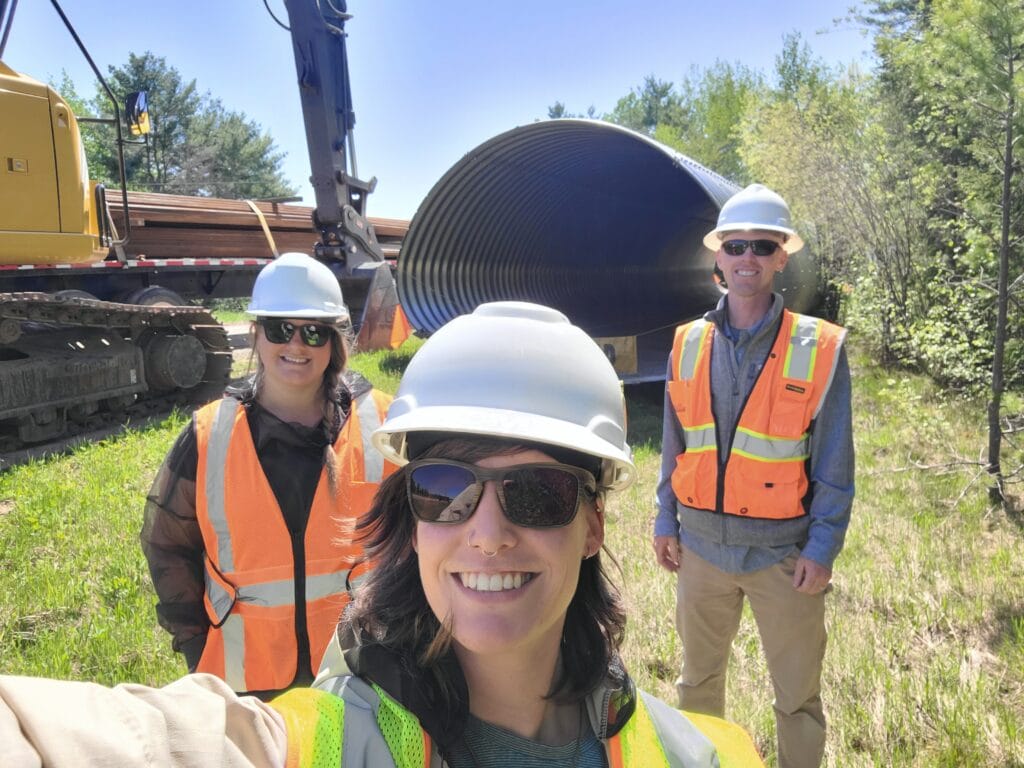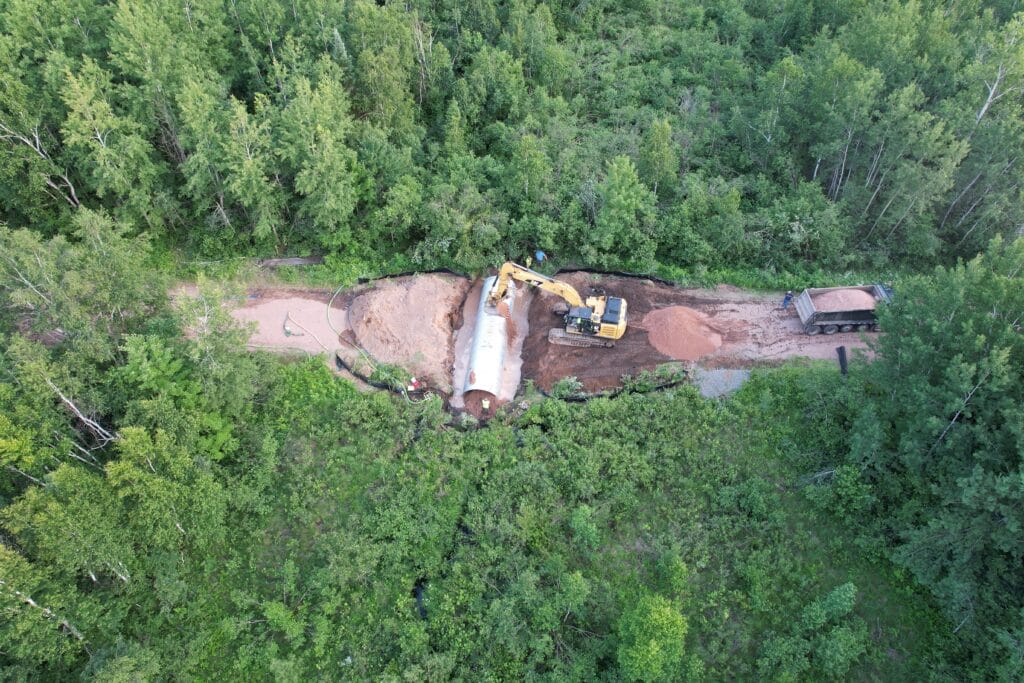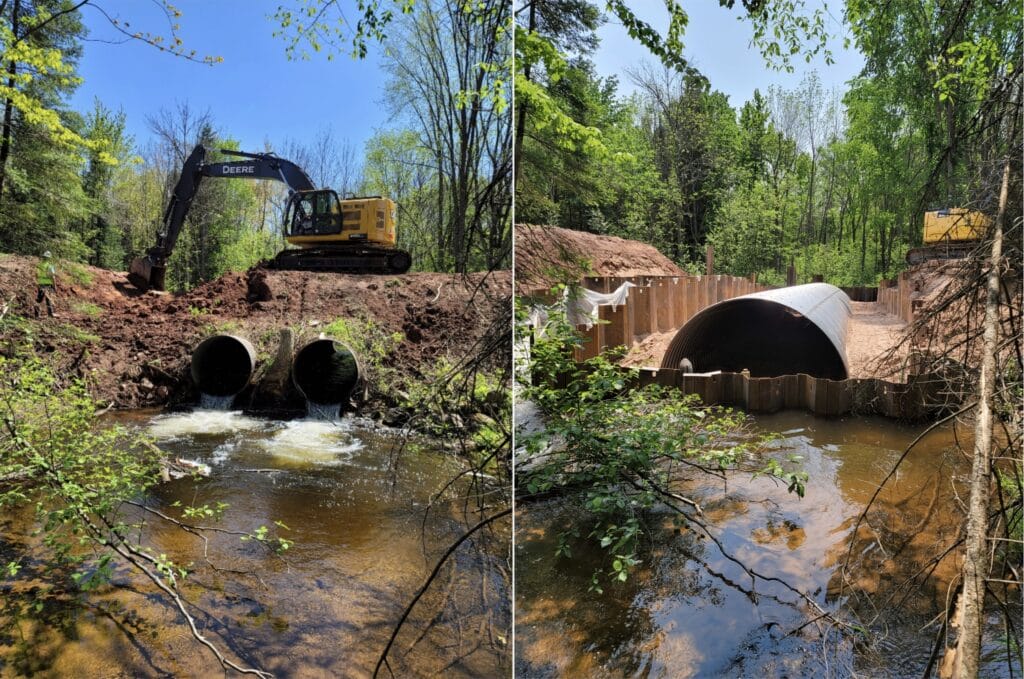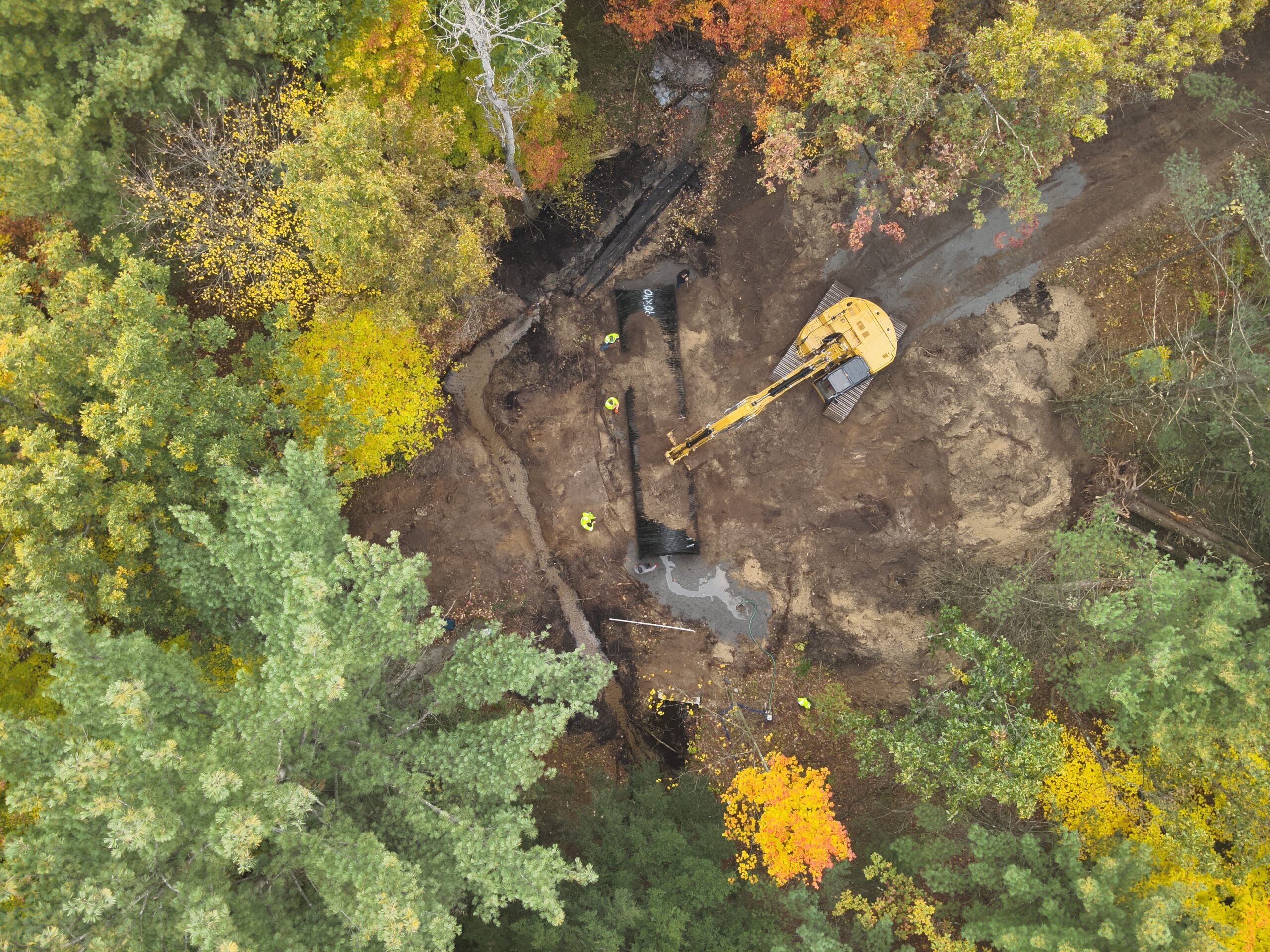2023 was a good year for Great Lakes coldwater conservation, marked by an influx of federal funding for necessary infrastructure upgrades.
It’s hard to believe that 2024 is here and I’m kicking off my 14th year at Trout Unlimited. When I was hired to manage the Rogue River Home Rivers Initiative in 2010, I was the first TU staffer in the Great Lakes. Ever. Today, we have a strong team of 12, and I’ve had the pleasure of managing them and seeing their growth over time, in numbers and in strength.
Even just a few years ago, I couldn’t imagine the synergy with which we’re working today. Every year, we’re working more collaboratively and getting better at sharing ideas and resources, but 2023 took our team to new heights.

Because of transformational funding opportunities made possible by the passage of the Bipartisan Infrastructure Law of 2021 and Inflation Reduction Act of 2022, we’ve been able to pursue basin-wide projects – opening us up to working on a much larger scale than we’ve ever been able to before. By not being limited by state and watershed boundaries, we are able to dream up bigger projects, and that’s resulting in bigger outcomes on the ground.
To get a good perspective of just where we’ve been working, check out this map highlighting the areas where we’re removing barriers, reconnecting rivers for the benefit of fish and people, and for the rivers themselves.
In 2023, we carried out our first road-stream crossing project in the Lake Superior basin on Wisconsin’s Wilson Creek. Next year, we’ll have reconnected the entire stream with two additional restoration projects.

On Michigan’s Hinton Creek, we replaced the 12th and final aquatic organism barrier identified in the system, completely reconnecting the mainstem of Hinton Creek with its fish-bearing tributaries.
The year also brought our first infrastructure projects getting implemented in Michigan’s Upper Peninsula on Spargo and Trout Creek in the Ontonagon River watershed. And that’s just to name a few highlights.
All this speaks much more to the successful partnerships that we’ve built and the support we’ve gotten by bringing more people into these efforts. Let’s be clear; this could not happen alone.

In total last year, we replaced and improved 12 road stream crossings resulting in reconnecting 40 miles of rivers and streams, where we also implemented restoration projects using natural approaches.
With so much more planned in the coming years, I already know this is a turning point that will shape our Great Lakes restoration for the better.



